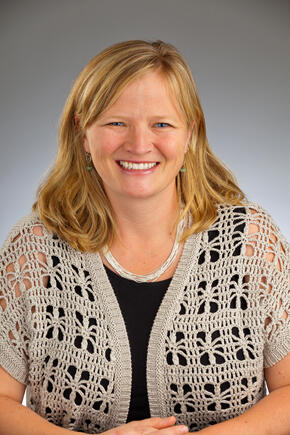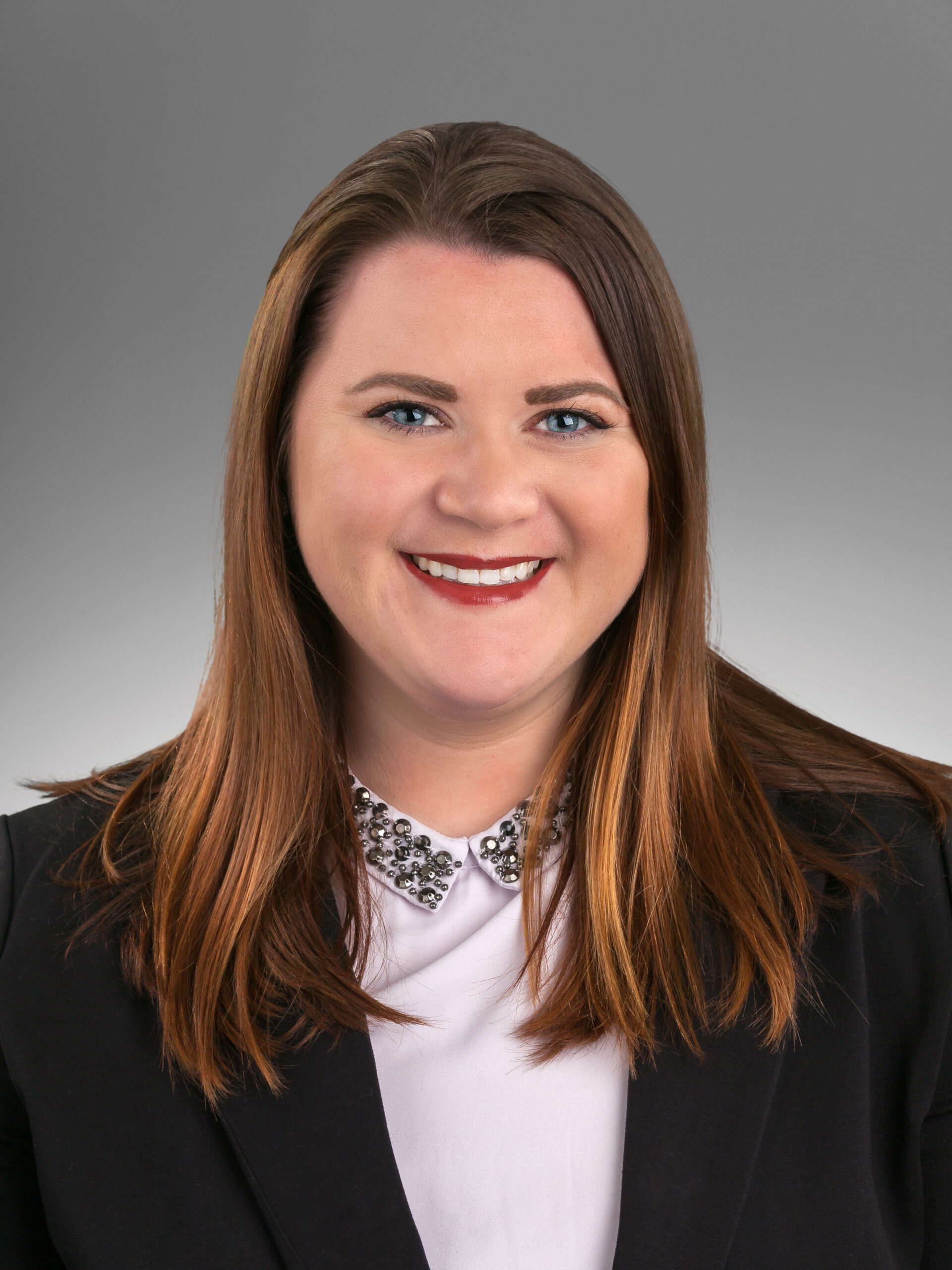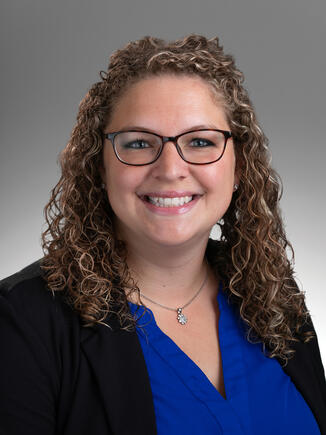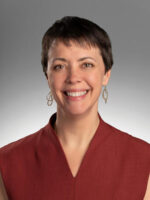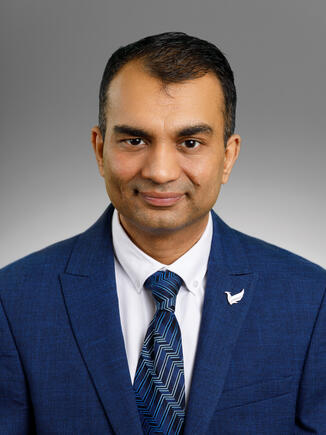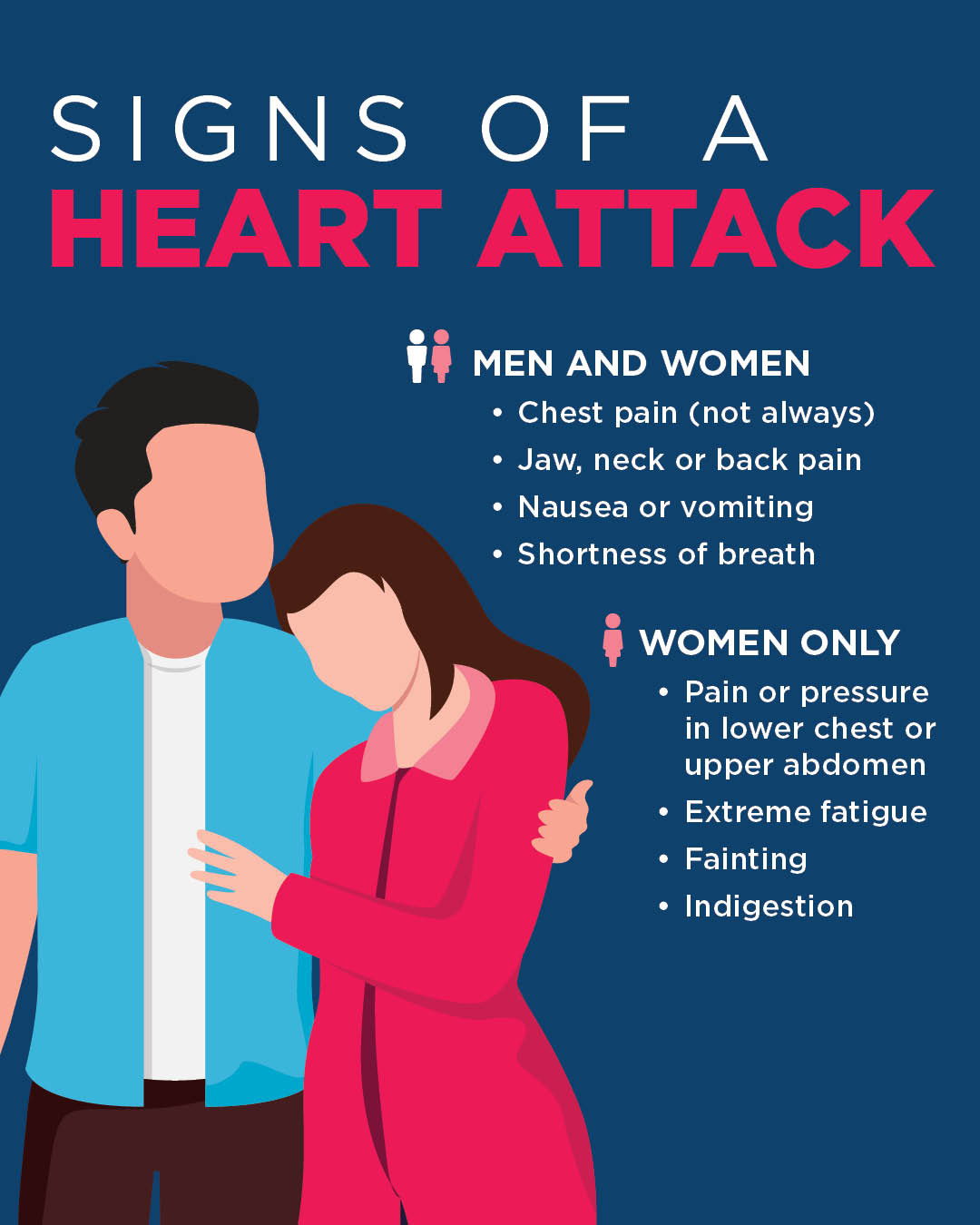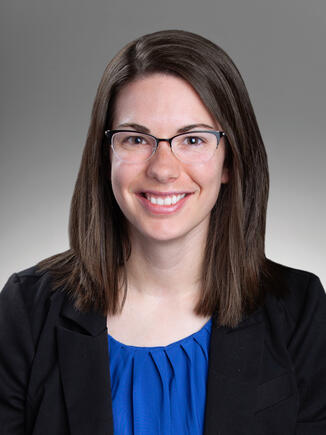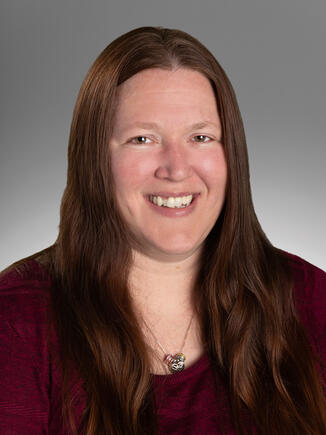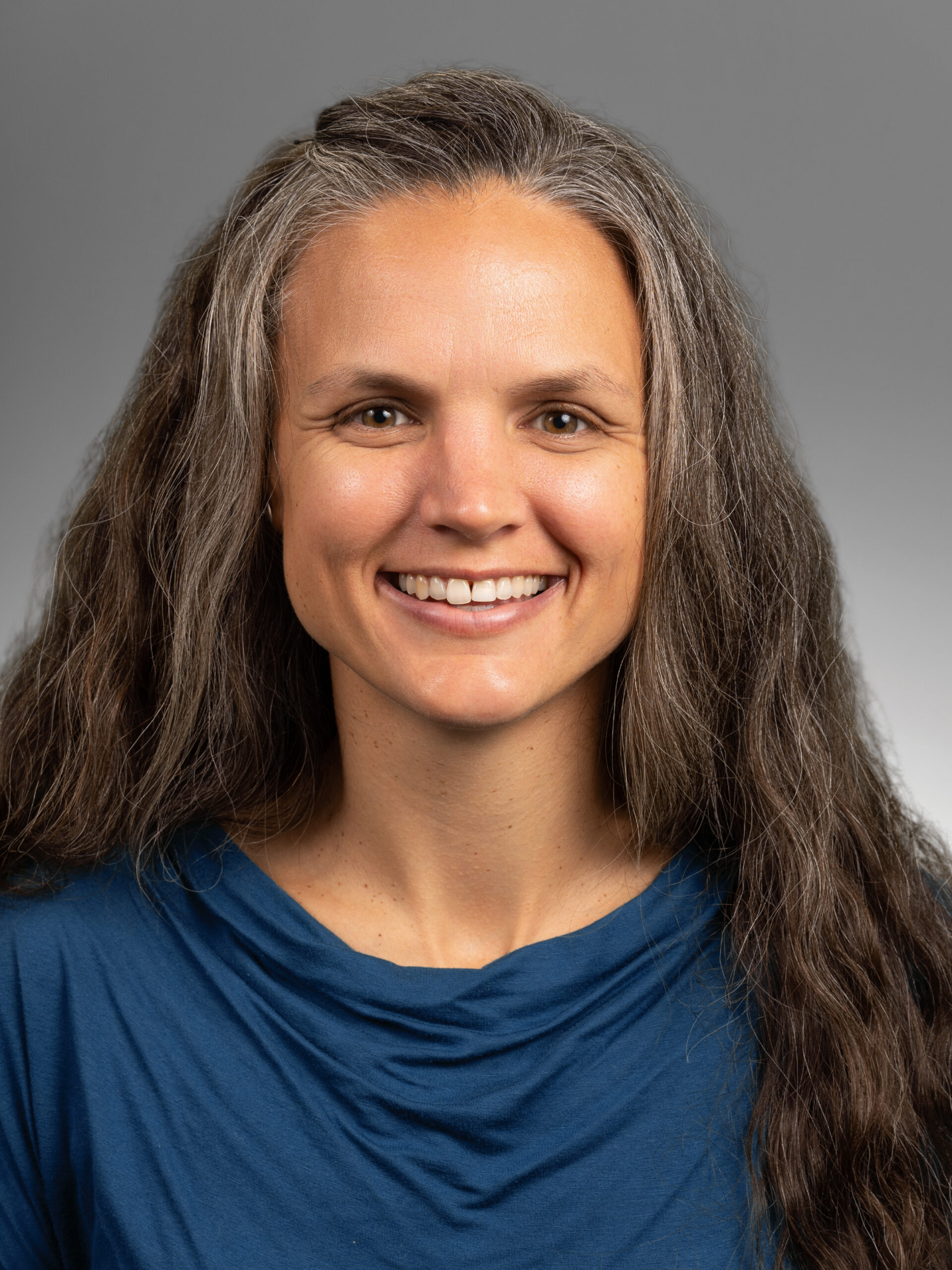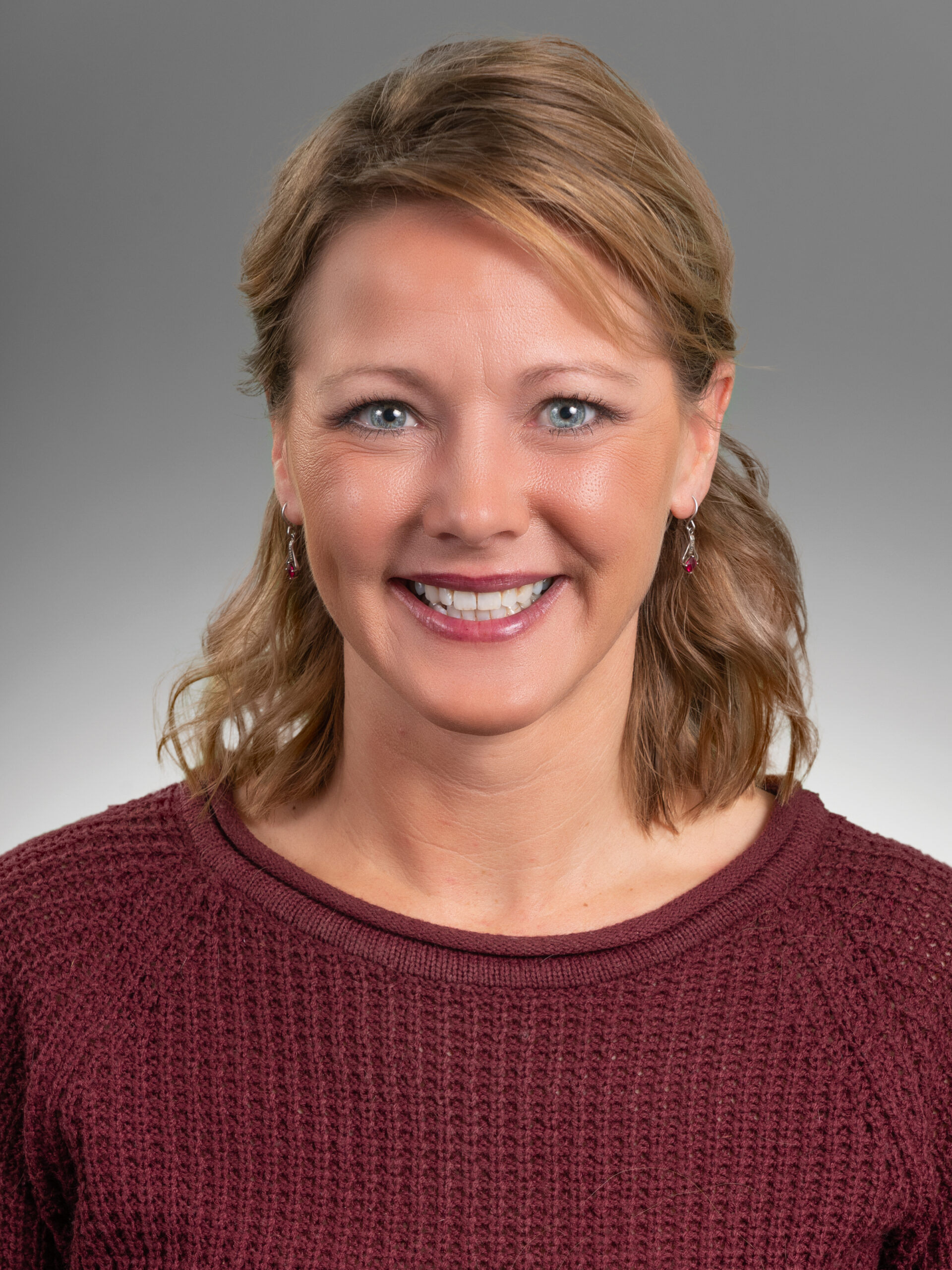Navigating senior care from the sandwich generation
Sarah Yoder:
There is joy along this journey. If you’re taking care of young children and caring for elderly aging parents there’s a tendency to feel like one is just a burden and one you want to tend toward doing, caring for your kids or just having to meet the needs of your elderly parent. And I would just say find the joy.
Cassie Alvine (announcer):
This is the “Health and Wellness” podcast brought to you by Sanford Health. The conversation today is about the sandwich generation and the various challenges of children caring for older parents. Our guests are Sarah Yoder, Alicia O’Neill, and Kelsey Nicola. Our host is Alan Helgeson with Sanford Health News.
Alan Helgeson (host):
This is the “Health and Wellness” podcast. I’m Alan Helgeson, and we’re talking about the sandwich generation and their challenges of caring for older parents and young children. And we have several guests joining us today, Alicia, Kelsey, and Sarah all around this round table here as we discuss this topic. Alicia, could you introduce yourself?
Alicia O’Neill (guest):
Yes. Hi. I am Alicia O’Neill. I’m the administrator for senior living within Good Samaritan here in Sioux Falls. So I oversee several of our independent living and assisted livings in the Sioux Falls area.
Kelsey Nicola (guest):
My name is Kelsey Nicola, and I am the manager for Prairie Creek memory care assisted living here in Sioux Falls.
Sarah Yoder (guest):
And my name is Sarah Yoder, and I have a parent who has lived in Good Samaritan for probably about seven or eight years and moved through the system and we’ve kind of lived out this sandwich generation theme here.
Alan Helgeson:
Well, I’m so grateful that you guys are taking time out of your day to talk about this very important topic. You hear this term sandwich generation and you know, it’s not about something with cold cuts and rye bread and mayonnaise. It’s a very important topic, and as we hear about the baby boomer generation getting bigger and bigger and the health needs that are coming, we’re trying to put some definition around this. So, Alicia, wondering if you can help us define what is the sandwich generation?
Alicia O’Neill:
The sandwich generation can be defined as a group of people that probably find themselves, they have young children at home, but they also have aging parents that are starting to need help, and they identify that now they need to become the caregiver for those parents as well as their children.
Researchers found that it’s usually people in their 30s, 40s, and 50s that tend to find themselves – I was astonished to hear even one out of 10 people, parents, find themselves caught in that generation of caring for children as well as their parents. That was a lot to me. I thought one in 10 and 66% of those caregivers are female as well and are still working outside the home. So balancing that work life and their children as well as then being the caregiver for their parents.
Alan Helgeson:
It can be so much. We know that a lot of folks as even single parents these days that it’s just so much that you spend a lot of time working, you care for your kids that there just isn’t any downtime. Right? So some of those characteristics you talked about with all of that going on here as we’re dealing with this, what we’d like to do is through the course of this episode is we hear about sandwich generation is putting a face on it and talking about that and explaining that. And Sarah’s here today as somebody that’s living and going through this. And Sarah, you talked about for the last several years you’ve been going through this with your family member. Tell us a little bit about your story.
Sarah Yoder:
Yeah, so thank you for having me, Alan. I really appreciate it. It’s kind of, as I was thinking about this, I was thinking about other people in my situation that may have young kids right now and what they may be facing. So my story really begins, my mom was a single parent and raised me as a single parent her entire life. And so there was always kind of a sense that I was parenting my parent all along the way.
However, in 2014 began the journey of really increased caregiving for me.
Mom was diagnosed with the first of five cancers over the next three-and-a-half years, between 2014 and 2017. And there were lots of surgeries, procedures, tests, doctor’s visits, chemo, radiation. At that time I had three children under the age of 10 at home, a 3-year-old, 6-year-old, and 10-year-old. And so it was a lot to try to find ourselves in a place where Mom needed care. There was really nobody else to do that. And then our children were growing and needing, of course, the nurturing and development that come with that stage for them. So yeah, it was a lot to juggle.
Alan Helgeson:
Do you have siblings around in the area too? Or are you an only child around here that it fell to? Or how did that dynamic work?
Sarah Yoder:
Yes, that’s a good question. I do want to say I probably cannot do this at all without the care of my husband. He has just been the absolute best partner and caregiver. I do have one sister, one sibling, and she moved away and has not been able to participate in caregiving. And so it really has fallen to me.
We do have both my husband and an aunt and uncle who have just been wonderful. There have been people absolutely that have journeyed with us through this process. But I think all along the way you can still begin to feel this overwhelm. You can feel the fatigue. You can start to feel how in the world do I balance all the demands with everybody needs something all the time? (laugh)
Alan Helgeson:
So Sarah, have you had to, during the course of this, maintain work as well too, in some role or capacity?
Sarah Yoder:
Yeah, I worked part-time here and there, but I also volunteered. Probably the bigger chunk was volunteering in my kids’ classroom. I was in their school half a day every week for nine years. And so because of my husband’s work, I was able to primarily stay home and really spend a lot of time volunteering in the community. I volunteered with our church.
And then I also was a caregiver to my aunt who had Alzheimer’s. She was in our home for several years. So there was, I’m a natural caregiver kind of a person who kind of enjoys that, and people describe me as very empathetic and it comes naturally to me, but it’s still very difficult.
There are friends that I have that would not describe themselves as natural caregivers or maybe not have the history of moving through health care systems or navigating that quite as easily. And, you know, people really need a lot of support.
Alan Helgeson:
Knowing just the medical piece alone takes so much time, and then dealing with some chronic conditions. You talked about several types of cancers. Talk about all these medical appointments and trying to juggle that in with an aging parent.
Sarah Yoder:
That’s really true. The medical appointments and even just navigating the health system can be really a daunting task in and of itself.
My mom was a nurse. She was a health care administrator growing up my whole life. So there was a little bit of familiarity there, but even with that, I found myself in a place where I would have to repeat myself often. I would have to make a case for what was going on. I would transport her.
Even just the scheduling of transporting, arriving, juggling kids’ activities or kids’ school pickups, all of those things kind of coincide together and really become kind of this perfect storm that really just kind of has the potential to really be burdensome and produce some anxiety or strain on the family.
I would say as far as health care, navigating health care, you know, sometimes you need an expert. Sometimes you need somebody who is an expert in their field to come along and figure out some health care things.
But I would say for the sandwich generation as an encouragement, more than that, you need a relationship. You need somebody – you need caregivers who know your parent well. They know the story. They know they history. I could give you tons of names of wonderful caregivers. And Sanford, Dr. (Stephen) Foley, Annie Bettcher (RN care manager), they’ve walked with us for years through some of these things. I can tell you countless nurses have walked into rooms with me, and they just know. They just get it in ways that other people don’t because they’re caregivers themselves.
Alan Helgeson:
Those relationships are so important, aren’t they, Sarah?
Sarah Yoder:
Yes, absolutely.
Alan Helgeson:
I mean, you had the benefit of your mother actually coming from that health care background. You had a little bit of a kind of that seed of knowledge. I mean, it helps a little bit, right? I mean, knowing some of that stuff, sure.
But let’s switch now. At some point you needed to make that decision or come to that decision where you needed to move into some care choices where your mother could be and to find a place where she could live and to be cared for, right? So a Good Samaritan was the place where you chose. Talk about how you got to that decision and what it looked like to get to that decision.
Sarah Yoder:
That’s a really good question actually, Alan. You know, in 2014 when Mom was diagnosed with the first of five cancers, we really began kind of this intense season of all these tests and doctor visits. And Mom moved into our home for a while because that was really the only way that I could care for her and our children who were very young. And so we had this blended home with Grandma who was losing her hair and having doctor’s appointments and juggling kids’ activities as well.
And you know, at the end about in 2017, after about three-and-a-half years of kind of walking that road, it just became really apparent to me that I needed help. I needed a support system. I needed some professionals to come alongside. And we began to look at several different places. The Good Samaritan really stood out.
Mom being in health care really wanted the continuity of care that Good Samaritan offered. And so she began looking. I began supporting her in that process and encouraging her. There was a lot of resistance and hesitation to do that because that’s a really big step in giving up independence. But she lived in Good Samaritan for years and really received wonderful care there.
"For the sandwich generation as an encouragement, more than that, you need a relationship. You need somebody – you need caregivers who know your parent well. They know the story. They know they history." Sarah Yoder
Alan Helgeson:
One of the things that you have to look at too is as things move along as you may need additional levels of care, is that a consideration that was part of your decision making as well?
Sarah Yoder:
Absolutely. Absolutely. You know, Mom’s terminology was always the continuity of care, that she could move along through the system as care needs increased. And you know, for me, I guess part of that was knowing that that was available, but also just having relationships with folks that knew my parent, knew where she was at and really could help us discern what she needed at the time, what was going on, how she could be best supported, what services they would offer.
Alan Helgeson:
So during this time, a lot of folks maybe feel that they’re pushing a parent towards a decision like this. How was that relationship with you and your mom? Was she making that decision on her own or were you helping to nudge her in this role? What was that like?
Sarah Yoder:
Yeah, that’s a good question. I would say it was a dance. Yes, it was (laugh) not easy for sure. Sometimes there’s resistance because there’s a lot of loss of independence. Or that’s the feeling, that there’s loss of independence. There’s a desire to continue to keep trying things and just maybe situations will change and then they’ll be able to navigate things.
So again, that’s where kind of the outside perspective really became beneficial. These are people who work with this population all the time and know what people need. They know and can observe the needs of your parent as well as you discuss those things. So yes, there was absolutely some, “Hey, I think we’re at this point, I think you need this.”
But after several years of all those health care appointments, we’d been on quite the journey. And so there was also some awareness, some comfort of, OK, I’m going to be in a place where I can have the care that I need and the support that I need.
Alan Helgeson:
Did you feel like you were alone and on an island of your own going through this?
Sarah Yoder:
That’s a tough question. I think those feelings can come anytime. I think that can be when you’re just beginning this journey and kind of wondering. One of the things as I was reflecting on this and what it was like for me is there are so many responsibilities, especially when my kids were young, sandwich caregivers really struggle from fatigue.
There’s around-the-clock caregiving, someone always needing something. It can feel like you personally have no free time, no margin in your life. Your friends may have hobbies or do things that you absolutely just don’t have time for. It’s an attempt to balance all the demands, the good things like children’s activities, and then also kind of just desiring to invest in their own growth and development, their shaping, their guiding.
So it can feel really like a role reversal and it can feel lonely and overwhelming, emotionally draining to have to give support when you feel like you’re the one who needs the support yourself.
Alan Helgeson:
Up and down all over the place. And then you mentioned talking about the comfort of having that external support, like the health care, the caregivers, like the doctors, the nurses, all of them being supportive. Did they play an important role at this time as well?
Sarah Yoder:
Absolutely, yes. I think I said before there were just kind of relationships with people that would just kind of know. There are some times where you will find yourself explaining situations or trying to grasp situations or trying to explain things you don’t understand medically or from a health perspective. And you need people to come along and help you discern that.
But then there are other times where there are just people who are excellent caregivers who really can come alongside you in really beautiful ways. They can put their hand on your shoulder and just say, you know what? I see you. I get it. I know what you’re carrying. Sometimes not even fixing things, but just being known.
Alan Helgeson:
You started out with your mom several years ago at one place. Where are you at today with your mom and Good Samaritan?
Sarah Yoder:
Well, that’s actually kind of funny that you ask because I was thinking, you know, we’re through this season. My kids are now 20, 16 and 13. They’re off to college and driving. And then yesterday I found myself scrambling as I’ve been working on Mom’s taxes and trying to get all that paperwork done and there’s all these hiccups and roadblocks along the way trying to navigate those things and get exactly the paperwork that I need.
Yesterday I found myself at her apartment having her on speakerphone with another administrator, trying to get authorization to get the paperwork we needed. All the while she’s having a low blood sugar, so I’m fixing her a snack and trying to get to my son’s band concert in time. I was driving to Brookings for his band concert. So just continuing to juggle all of those things.
Alan Helgeson:
And you just become a master scheduler, and it just becomes what you do, right? What services or what level of care is your mom at today? Has she moved to different levels?
Sarah Yoder:
Yeah, she lived in independent living for quite a while. She’s currently living in assisted living and they’re wonderful to her.
Alan Helgeson:
Appreciate you sharing your story and we’ll come back with some more of those things.
Alicia and Kelsey, I want to talk to you – and let’s talk about some numbers here. Have you noticed any recent trends or changes in the demographics or experiences of the sandwich generation? As we’ve been talking about this, we had a really nice lead in here in getting that phase to what really the sandwich generation is, and what it really means of what somebody’s going through.
Kelsey Nicola:
Like you had mentioned, Alan, we have more people than the baby boomer generation with chronic illnesses, which means that they’re needing support a little bit earlier than what we’ve seen before. So we’re getting people younger coming into our facilities and into assisted living and into my memory care.
That means typically that their spouses are still working. And so it really puts a strain on those spouses and children, if they have them, because we might call them and say, “Hey, something’s going on. We need your help today.” But they’re working and they have to try to juggle getting out of that. Or like Sarah said, going to children’s activities. All the while we’re trying to still learn their loved ones and how best to support them, especially at younger ages.
Alan Helgeson:
Are you finding a good level of employer flexibility in this too, these days? Is that being helpful to these working spouses?
Kelsey Nicola:
I have seen people who back down to part-time hours to have that flexibility, and then I’ve also seen people who have had the ability to no longer work to help support their loved ones in the facilities. I wouldn’t say that employers are always as forgiving as they need to be or flexible with people’s loved ones, which really puts a strain and brings a lot of guilt into their spouses’ lives.
Alan Helgeson:
It’s really all over the place. You talked about specifically that Kelsey, you work in the memory care area. Can you explain a little bit more about what the memory care area covers and serves for Good Sam?
Kelsey Nicola:
Yeah. Our building specifically, it’s a memory care assisted living. We have 32 private suites, so all of our residents do get their own rooms with a bathroom, and we serve populations who have to have a diagnosis of dementia.
People come in maybe needing just queuing support, getting to activities or to the dining room. And then we also go up to people needing full assistance with all of their activities of daily living. We do support a little bit higher level of care than what Sarah’s mom, the facility Sarah’s mom is at, but at the end of the day it’s still assisted living. So we give as much support we as we can and a lot of cognitive support.
Alan Helgeson:
So can you give an idea of like the age range that you may support?
Kelsey Nicola:
My youngest resident currently is 60 and my oldest one is almost 97.
Alan Helgeson:
Well let’s talk about some of the common emotional and mental health challenges faced by the sandwich generation.
Kelsey Nicola:
We see a lot of grief, a lot of guilt that is associated with having to make that decision to move to a facility where they can receive care. We all know that people want to stay at home as long as they can, and we support that. And also spouses really take those vows to heart and they want to care for people in sickness and in health and be with them. It’s very hard for people to come to the decision that they need that support.
And it’s not just spouses. It’s children too. We often, in my building, will find we have family members, children, spouses who are in our offices asking us to give the answer what do they do? And we don’t always have that answer, but we can be there to support them and talk about other experiences that we’ve seen with people and as they go through guilt and grief.
Alan Helgeson:
Not having any answers here, but I’m guessing everybody wants you to tell them what to do, don’t they?
Kelsey Nicola:
Yes, they do. (Laugh)
Alan Helgeson:
They want you to give them the magic answer because they have no idea, right?
Kelsey Nicola:
They don’t. Nope. And it’s a hard journey for everybody, and every journey’s different.
Alan Helgeson:
What can they do? How do you maybe guide them with some of these mental health challenges and some of this grief? Where do you guide them and maybe direct them to help them go through some of these things?
Kelsey Nicola:
In Sioux Falls, we’re very lucky to have a number of different programs available. We have the Alzheimer’s Association and we’ll give them information on that.
And we also have Active Generations, which is a fantastic resource for people where they can go. If they’re not ready to move into our building, we often will lead them to Active Generations and let them know of the services that they have there.
We also have good partnerships with Home Health in Sioux Falls and we can refer them to Good Sam Home Health or Sanford for a little bit of extra assistance in the home.
We also let them know that what they’re feeling is not uncommon and it doesn’t mean that they’re doing anything wrong. We let them know that their journey is individual, and that’s OK. They’re going to come to that decision when they need to, but we’re going to be there for support and resources when they need us.
Alan Helgeson:
Are there any support things or guidance that you offer for those family members? Are there some things that you can help them with?
Kelsey Nicola:
Yeah, we have a library at Memory Care in our building that has a ton of books on resources, different types of dementia, people’s own individual stories and kind of how-to books. And we also partner with people to come in and do like education series, education talks. We have numbers for clinics that they need to get ahold of and pamphlets and business cards for different groups. Like associated with the Alzheimer’s Association.
Alan Helgeson:
Are there resources as well, Kelsey, for family members and the children as they’re looking for this stuff? And where could they find that?
Kelsey Nicola:
There is a really good resource online. It is www.good-sam.com.
One thing that is wonderful on that website is a connection to what is called our connection center. So somebody can call in, say I have my parent who’s needing extra support and I just don’t know where to start. If they give us the location that they’re from and where they’re kind of looking and just a little bit of background on what that parent is maybe needing, they have people who will take all that information down and then email it to those locations so that we can reach out to them, then get a little bit more of an idea of what they’re needing and set up tours, ask if they want more information and send that out.
Alan Helgeson:
Kelsey, what is the Good Sam Connection Center phone number?
Kelsey Nicola:
It is a toll free number. It is (855) 466-3726.
Alan Helgeson:
Can you repeat it one more time in case people are running, grabbing a pencil and we’ll hit it again here at the end of the program.
Kelsey Nicola:
Sounds good. The toll free number for the connection center is (855) 466-3726.
Alan Helgeson:
Alicia, can we talk about some of the financial things here? How does being a sandwich generation caregiver impact someone’s financial situation?
Alicia O’Neill:
You’re in a position of not only planning maybe for college expenses and your own retirement planning and then looking out for your loved ones, the funds that they’ve spent their years earning, and how do I best utilize those funds to get my mom or dad on the best care that they need?
And so really just balancing that out and as much as you maybe feel guilty about it, you need to look to protect yourself first. And so I think really working with a financial advisor too on making sure you know your own financial situation and what do you need to set yourself up for the next few years and then having that difficult conversation early, I think with family members is very important.
Maybe even before you get to the point where you’re a caregiver to understand your parents’ finances, where are their accounts, what do they have for insurance accounts? What do they have in savings so that when you are in a caregiving situation where they can’t make those decisions on their own anymore, you’re a little more prepared.
And then putting all of that in one spot. So making sure you have your loved one’s accounts and all of that information together so that it’s easy to grab when you are having to do taxes or things like that that you hadn’t really thought that you’d have to do someday.
And then just working with that financial advisor I think would be helpful too, to then what’s out there for grants or scholarships or programs then for my kids. So the important message is don’t forget yourself in that and maybe make sure you’re protected that way too.
Alan Helgeson:
At Good Sam, how do you help somebody navigate those discussions and plan for things like that as they’re looking for care options?
Alicia O’Neill:
So it’s really just sitting down and looking at what they have for finances and then looking at our different levels of care to see where maybe they could afford to receive the care.
Like Kelsey said, within Good Sam and Sanford, we have a lot of different ways that support and caregiving can be done. So maybe it is caregiving in the home and so maybe that’s where they need to start and to understand the financial implications of maybe they can afford to bring in a home health caregiver.
Or maybe it is moving into one of our locations within independent living or assisted living. So just trying to balance through that. We really refer people more to their financial planners and things as far as their investments and things like that, especially people that are starting this journey and just starting to look out. It’s things to think about as they’re planning for what does it cost for assisted living?
You know, there’s long-term care insurance out there. Some people don’t even know that. And so just giving them the questions to ask maybe of their financial planner, how do I protect my estate? And things like that as I go through this journey from maybe independent living all the way up to skilled nursing care and giving them those resources.
But typically we would refer them back to their financial planner for the details to work out what works best for them. But like Kelsey said, we try to be that resource and having those business cards or flyers or things to refer them on for that, but at least we can give them those questions to start asking and thinking about.
Alan Helgeson:
So, really big takeaway: Start now and remember, you have lots of options. So the key thing here, just you have to start now.
Let’s go back to looking at some effective ways for individuals in the sandwich generation like Sarah. Give us some strategies that we can put to use and think about those things as we’re starting that.
Alicia O’Neill:
I think back to that financial question as well as, you know, when Sarah talked about all of those different emotions and burnout is what I think about sometimes is don’t be afraid to ask for help. And I think this is a great resource for people to even know what is out there for help.
A lot of facilities maybe offer respite care. So is there an opportunity where I can get a break? Kelsey mentioned the Active Generations. They’re a great place here in our location, and I’m sure others across the country maybe have like a daybreak kind of program or a respite care kind of program where you can have your loved one go for some time so that you can get a break.
And again, reaching out to, you know, our Good Sam Connection Center to connect you with different resources, just asking some of those questions of us, we can help navigate that circumstance or have that conversation with your loved one too, of what’s out there.
And so maybe if they aren’t quite ready to make that move, we can again pair them up with our home health or other services that we’ve just kind of been learning about too within our state, with the Department of Human Services, they’ve got Dakota at Home, and there are a lot of different caregiving grants out there, other caregiving programs that can help people finance some of these respite stays as well that we’ve just learned about in the last few months too.
So we can help make that call. We can help you kind of get some of those resources, whether you’re ready to move into one of our locations or if we can help pair you up with some of the other resources in this state as well as within our organization.
Alan Helgeson:
Alicia talked about, you know, some of these big things, the financial things, but are there some more basic things on that to-do list that we could do?
Kelsey Nicola:
One thing that sticks out into my head is that we are not a population anymore that stays in one spot. People might have kids who have moved across the country, just even across the state or out of the country.
One of the things I think is very important is having a conversation before you need assistance about do you want to stay where you are living now or do you want to get closer to where your family is? Just having a very honest conversation about that. It is uprooting the life of somebody, but it also in the end does provide more support for the person who is needing that support at the time.
Something else is, like Sarah had mentioned, her mom and her started looking for different locations, looking at different locations where her mom could get that support. It’s important to know what your options are in the area that you live or in the area that you want to live so that when the time comes that you need that support, it’s not a last minute thing and you end up someplace where maybe you didn’t want to at that time.
I think those are a couple of the biggest things, building your support system. Also, it doesn’t have to be family. It doesn’t have to be people who you are necessarily close with. Ask your friends, ask your loved one’s friends if they are somebody who can help support when that time comes.
We have a resident who gets support from friends and a friend of a friend. And she has just a wonderful support system here, which is so comforting to her kids who are not here. So building that support system is something that is crucial to caregiving for anybody out as well.
Alan Helgeson:
Can you again, run through those resources that are available at Good Sam and Sanford Health?
Kelsey Nicola:
We have on Good Sam’s website, it’s www.good-sam.com, resources that talk about the different level of cares that Good Samaritan offers. So we have independent living, assisted living, memory care assisted living’s in there, respite care, and then also our skilled nursing facilities. Those are wonderful websites and resources just to give a brief overview of what those levels of care are.
And we also have that connection center that people can call into. They talk to somebody and tell them just a little bit about the situation that’s going on, the location that they’re at, and then the connection center will email the location. Then the location can reach out and give resources as well.
Alan Helgeson:
Kelsey, what is that number for the connection center?
Kelsey Nicola:
The connection center number, it’s a toll free number. It is (855) 466-3726. And if you call and it’s after hours or on a weekend, you’re able to leave a voicemail and we get back to you.
Alan Helgeson:
Can you hit that number one more time please?
Kelsey Nicola:
(855) 466-3726
Alan Helgeson:
As we’re winding down the episode today, it’s been so much great information to share. What advice would you give someone who is just beginning to navigate the challenges of being in that sandwich generation from your perspective?
Alicia O’Neill:
Just know that we’re here to help, and there are many resources out there. You don’t have to do this alone. That’s what we’re here for. And that’s, I think, our favorite part of our positions and our jobs is being able to help guide families with these decisions and help give them the resources that they need and the support that they need to navigate this journey.
Get them the care wherever they desire, whether it’s home or in one of our locations. That’s my favorite part is being able to see how we can support and guide them, get them the help they need, and then ultimately, if they do decide to move in, see them flourish in our environment.
So don’t do it alone. There are many resources out there to help you.
Alan Helgeson:
Well, we’re so grateful that both of you are here and helping people feel comfortable because it is scary for somebody starting that journey and you’re making it better for people and for the people that are becoming residents and calling Sanford Health and Good Samaritan home.
So we want to turn to you as we wind down the episode today. Sarah, we are so grateful that you chose to come and share your story here and putting a face to what the sandwich generation is and can’t think of anybody better to give us advice as somebody that is going to be starting this journey. Tell us what would you offer as advice to somebody that’s starting.
Sarah Yoder:
I thought of those people who are just beginning this journey and really wanted to be a voice of encouragement and support for them. I think it’s important to just be aware that Good Samaritan and Sanford Health really are excellent at resourcing services. They can really help people who are beginning on this journey asking questions, where do I turn? How do I find resources? Even just filtering through that can feel overwhelming, and so they can do a wonderful job at providing those.
But I would just really encourage the person out there who’s listening that it goes so far beyond just services. You need to begin within those services to develop relationships with people that will come alongside you for a long time.
Yes, I have been in this caregiving sandwich generation role for over 10 years. I think it’s been about 13 years. So within the financial advisor, having the person that when you call, they know your name, the physician or the nurse advisor that really knows your situation and journeys with you, the person at Good Samaritan who knows your mom and her favorite preferences or activities, those kinds of things really help to develop those relationships and will sustain you in different ways.
I would also just say there is joy along this journey. If you’re taking care of young children and caring for elderly aging parents there’s a tendency to feel like one is just a burden and one you want to tend toward doing, caring for your kids or just having to meet the needs of your elderly parent. And I would just say find the joy.
Children can bring such joy with creativity and laughter and discovery as they’re growing. Children themselves can benefit from observing good caregiving. It can contribute in very healthy ways to their development. They themselves can feel like they’re contributors by bringing a glass of water. When Grandma needs her pills or taking out the garbage and having additional responsibilities, it can make them feel proud. It’s not necessarily something to shy away from, but involve them.
And then I would just say, look for support within the entire community. Find a church. The church is a place where we can bear one another’s burdens. We can be known. For me, finding rest and peace, hope and comfort in knowing and abiding in Christ, Good Samaritan was so important to Mom that there was a faith component in that. And I would agree wholeheartedly.
And then look to the community. There are excellent educators within the schools that will come alongside your children and provide some of that support to speak into their lives, notice their giftedness in there, and encourage them, guide and support them.
And then just the advice I would give: Don’t be afraid to establish healthy boundaries. Acknowledge your limits. You’re only human. There are limits to what you can do. So don’t put extra burdens on yourself. Be gentle with yourself along the way. You’re learning. You’ve never done this before, so give yourself some grace. Again, find a faith community. We need each other and we can share each other’s burdens along the way.
And then find that relational support, not just online chats, not just searching on your computer, but find people who will call and check in on you, who will send you a card or might just show up with a casserole. Sometimes you just need a casserole.
Alan Helgeson:
Sarah, Alicia and Kelsey, thank you for being here today because you’re sharing great information, really being a lighthouse to folks that are trying to find information, valuable information as they’re going through the challenges here and caring for older parents. And they also have young children at the same time learning about the sandwich generation. I’m Alan Helgeson. This is the “Health and Wellness” podcast.
Cassie Alvine:
This episode is part of the “Health and Wellness” series by Sanford Health. For additional podcast series by Sanford Health, find us on Apple, Spotify, and news.sanfordhealth.org.

